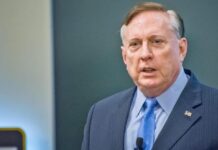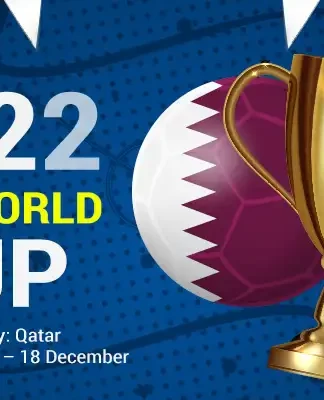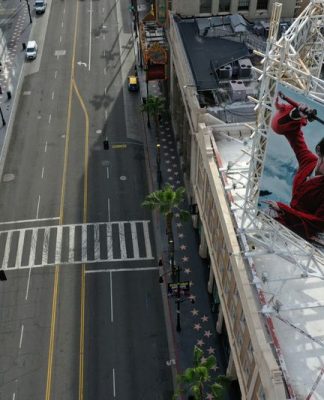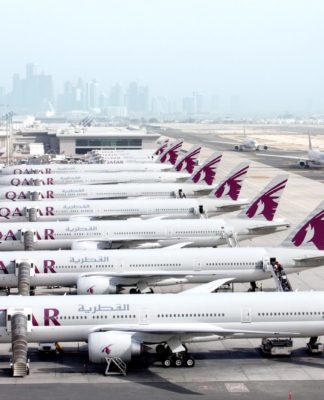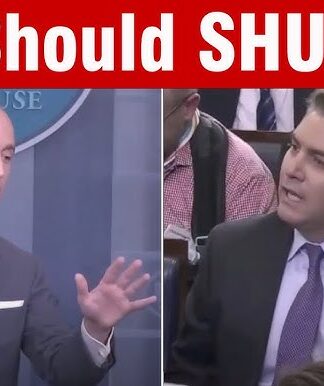How to Apply For an American Tourist Visa B2
PARTS
1Submitting Your Application
2Attending Your Interview
3Visiting the U.S.
OTHER SECTIONS
Questions and Answers
Tips and Warnings
Related Articles
References
More than 75 million people visit the United States every year, and if you want to be one of them you need to get a B-2 tourist visa.[1] With this visa, you can go sightseeing, visit family or friends, or just rest. Apply online and submit all required supporting documents. Your tourist visa is good for six months
Submitting Your Application
-
 1
1Have a recent picture taken. You need to submit a recent picture as part of your application. The picture will be passport-sized and should meet the following requirements:[2]
- The picture must be in color in front of a white background.
- It should be 2 x 2 inches.
- It should have been taken within the past six months.
- Your head in the image must be 1 inch (2.5 cm) and 1 3/8 inches (22 mm and 35 mm) or 50% and 69% of the image’s height, from the top of the head to the bottom of the chin.
- Your face should stare directly at the camera with a neutral facial expression. Your face must be visible.
- You should wear normal daily clothing. Avoid wearing a hat or other headgear unless you have a religious purpose for wearing it.
- You cannot wear headphones or glasses.
- The picture must be in JPEG format. Minimum digital dimensions are 600 x 600 pixels, with maximum dimensions of 1200 x 1200 pixels.[3]
-
 2
2Complete the application online. Form DS-160 is available online here: https://ceac.state.gov/genniv/. You will need to select your location from the drop-down menu. Follow the instructions on the page when answering questions. You can check your answers before submitting them.[4]
- You will upload your digital picture to the application. If it won’t load, then you’ll take a picture to your interview.
- Remember to print off the confirmation screen that contains a barcode.
-
 3Pay your fee. You may have to pay your visa application fee before your interview. Generally, the fee is $160. Visit the usembassy.gov website to find out how to pay your fee.[5]
3Pay your fee. You may have to pay your visa application fee before your interview. Generally, the fee is $160. Visit the usembassy.gov website to find out how to pay your fee.[5] -
 4
4 -
 5
5Renew your passport, if necessary. Your passport must be valid for six months past the date you intend to stay in the U.S. For example, if your visit ends June 12, then your passport should be valid until at least December 12.
- There are many exceptions, depending on your country. You can see a list of countries exempted from this requirement on the Customs and Border Patrol website.[8]
Attending Your Interview
-
 1
1Gather documents. The consular official should tell you what you need to bring in advance of your interview. For example, you will probably need the following:
- confirmation page to Form DS-160
- receipt for payment of the application fee
- passport
- photographs if you couldn’t upload the picture
- evidence you intend to return home after your trip (some applicants)
- evidence of your ability to pay for the trip, such as bank statements (some applicants)
-
 2
2Answer questions. When you arrive at the consulate or embassy, show your appointment letter to the guards. An embassy or consular official will check to make sure everything is in order. You will then talk to a different official, who may ask you questions about your job, education, and your plans while you are in the U.S.[9] Answer all questions honestly.
- The interviewer wants to see that you have sufficiently strong ties to your home country so that you won’t try to stay in the U.S. permanently.
- If you are traveling for medical treatment, you may need to provide a diagnosis from your doctor and an explanation of the treatment you are seeking.
-
 3Pay an issuance fee. In some countries, you must pay an additional issuance fee. You can check how much you will pay ahead of time by contacting your embassy or consulate. You can also check the State Department website and enter your country.[10]
3Pay an issuance fee. In some countries, you must pay an additional issuance fee. You can check how much you will pay ahead of time by contacting your embassy or consulate. You can also check the State Department website and enter your country.[10] -
 4Give fingerprints. Digital, ink-free fingerprints will probably be taken during your interview.[11] However, each consulate or embassy is different, so you may give them at a different time.
4Give fingerprints. Digital, ink-free fingerprints will probably be taken during your interview.[11] However, each consulate or embassy is different, so you may give them at a different time. -
 5Receive your visa. If you are approved, then arrange for the delivery of your visa. For example, you can usually pay at the consulate for a courier to deliver the visa to you. The average processing times will differ depending on the embassy and your personal situation, but 3-5 business days is typical.[12]
5Receive your visa. If you are approved, then arrange for the delivery of your visa. For example, you can usually pay at the consulate for a courier to deliver the visa to you. The average processing times will differ depending on the embassy and your personal situation, but 3-5 business days is typical.[12]
Visiting the U.S.
-
 1
1Present your visa at a port of entry. The visa lets you travel to a port of entry and ask for permission to be admitted. Your visa doesn’t give you a right to enter. A Customs and Border Protection official will ask you questions about your stay before deciding whether to admit you.
- Once admitted, you’ll receive a paper Form I-94 or an admission stamp.[13] The form or stamp will tell you when you must leave the U.S.
-
 2
2Don’t violate your visa. A tourist visa allows you to visit friends and relatives, rest, or receive medical treatment. You can also participate in activities of a fraternal or social nature or participate in contests as an amateur.[14] However, you can’t do any of the following:[15]
- You can’t study in a school. Instead, you should get a student visa.
- You can’t work a job. Instead, you should seek a work visa.
- You can’t receive payment for performances or perform professionally in front of a paying audience.
- You can’t seek permanent residence in the U.S.
- You can undertake business activities, such as negotiating a contract or consulting with business associates. Instead, get a B-1 business visa.
-
 3Leave on time. You must leave by the date on your I-94 or admission stamp.[16] This date probably is earlier than the date your visa expires. If you don’t leave on time, then you will be out of status, which can seriously hurt your chances of getting a visa to the U.S. in the future.
3Leave on time. You must leave by the date on your I-94 or admission stamp.[16] This date probably is earlier than the date your visa expires. If you don’t leave on time, then you will be out of status, which can seriously hurt your chances of getting a visa to the U.S. in the future. -
 4
4Extend your stay. You might choose to stay longer, or you might be forced to because of an accident or medical emergency. Extend your stay by filing Form I-539.[17] Download the form and read the instructions here: https://www.uscis.gov/i-539. You should file at least 45 days before your stay expires.
- You can get an extension if your visa or authorized stay has expired. However, you must have compelling circumstances, such as a medical injury that prevented you from filing for an extension on time.
- After you submit your form, you will receive a receipt. This receipt will tell you how to check on the status of your extension request.









